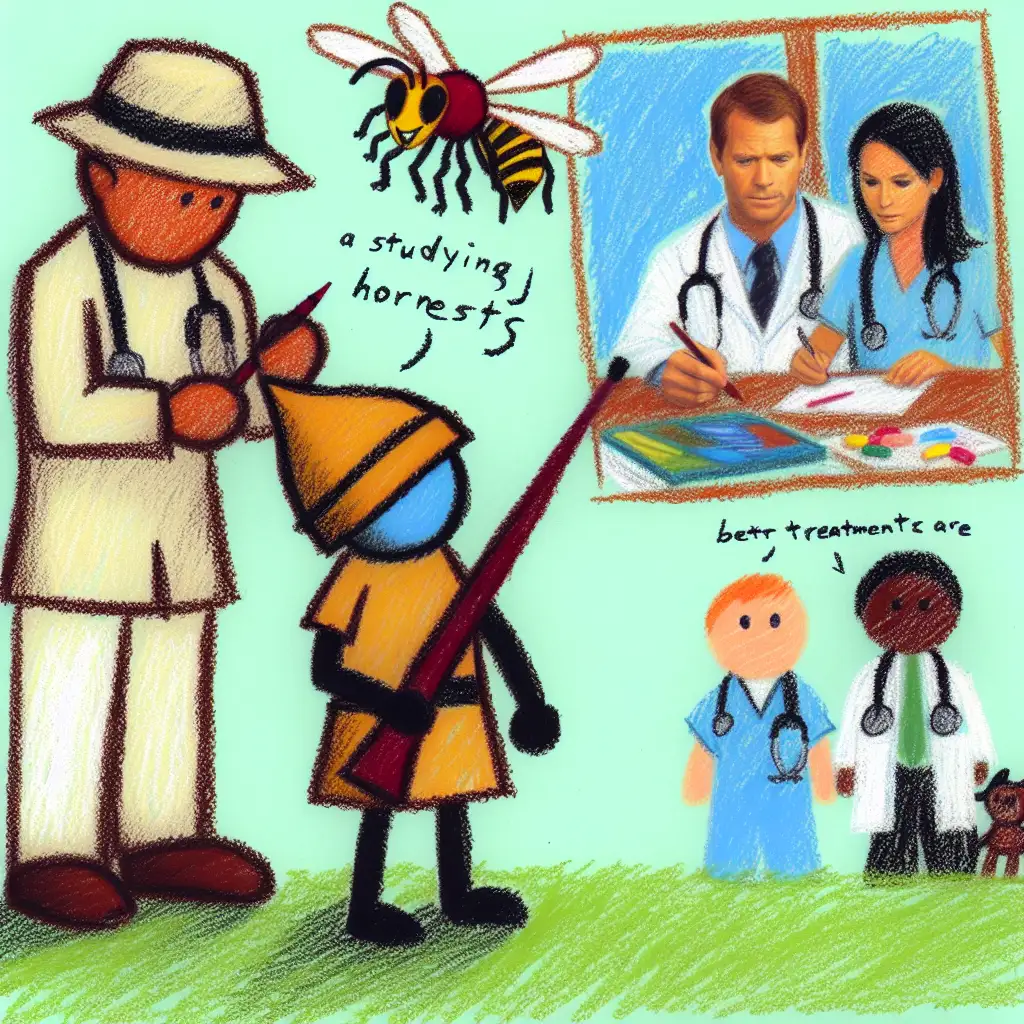A hornet hunter's finds help make treatments for allergic reactions

Explain Like I'm 5
Imagine you have a toy box, but instead of toys, it's filled with hornets, and someone needs those hornets to make a special medicine. This medicine helps people who get really itchy and sick if they're stung by a hornet. So, there are these brave hornet hunters who go out during the summer, catch these hornets, and send them to a company. This company knows how to take something from the hornets and turn it into a medicine that stops people from feeling so bad when they get stung. It's a bit like turning something scary into something super helpful!
Explain Like I'm 10
During the summer, hornet hunters have a very important job. They go out and collect hornets from different places. Why? Well, there's a company that needs these hornets for a very special reason. This company takes the venom (which is the part of the hornet sting that makes it hurt and swell up) and uses it to make a medicine. This isn't just any medicine, though; it's used to help people who have severe reactions to hornet stings, known as allergies. These reactions can be really dangerous, so having this medicine is super important.
The hunters catch the hornets and then send them to this company, which then carefully takes the venom and turns it into a treatment. So, the scary sting of a hornet is actually used to stop the sting from being so dangerous in the future. It's a cool example of how something that can hurt us can also be used to help us!
Explain Like I'm 15
Here's how it works: During the warmer months, when hornets are most active, hornet hunters across the U.S. gear up for a unique and risky task. They carefully trap hornets and send them to a pharmaceutical company. This company specializes in developing treatments for people who are severely allergic to hornet stings. These allergies can be life-threatening, manifesting symptoms like extreme swelling, difficulty breathing, and even shock, known as anaphylaxis.
The process involves extracting venom from the collected hornets. This venom is key in creating what's known as venom immunotherapy. Essentially, this treatment exposes the allergic person to small, controlled doses of the allergen (in this case, hornet venom), which over time can help their immune system become less reactive to it. It’s like slowly turning down the volume on an overly loud reaction until it’s just a whisper.
This method isn't only crucial for individual health but also has broader implications. By improving how we treat and manage allergies, we can reduce medical emergencies and healthcare costs associated with allergic reactions. Plus, it highlights a fascinating aspect of medical science: turning a natural threat into a lifesaving cure. So, the work of these hornet hunters, while definitely on the adventurous side, contributes to significant advancements in allergy treatments.
Want to read the original story?
View Original Source